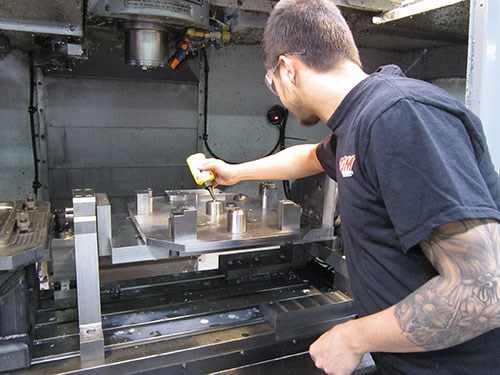Got Glue (And UV Light)?
Here’s an effective albeit atypical way to fixture parts such as thin-wall castings that are prone to flexing when conventional mechanical clamps are used.
Share






Sometimes shops have to get pretty creative when trying to figure out how best to fixture a part for machining. , in Rochester, New York, leverages an atypical technology to fixture parts such as thin-wall castings that are prone to flexing when conventional mechanical clamps are used.
In short, this technology, available from , uses adhesive to temporarily bond a workpiece to numerous cylindrical grippers installed in a fixture plate. Once the adhesive is cured via ultraviolet (UV) light, the workpiece is securely held at a known datum location in an undistorted, free-state condition. After machining, the adhesive bonds between the grippers and workpiece are easily broken and any excess adhesive is removed from the completed part via a quick, steam-cleaning wash.
Read this story to learn how PGM is using this technology to its advantage.
Related Content
-
Custom Workholding Principles to Live By
Workholding solutions can take on infinite forms and all would be correct to some degree. Follow these tips to help optimize custom workholding solutions.
-
Machining Vektek Hydraulic Swing Clamp Bodies Using Royal Products Collet Fixtures
A study in repeatable and flexible workholding by one OEM for another.
-
Using Jaws as Grippers Enables Flexible, Low-Cost Automation
VersaBuilt’s automation systems significantly boosted Innovative Fabrication’s revenue. In return, the shop has helped VersaBuilt optimize its products.














